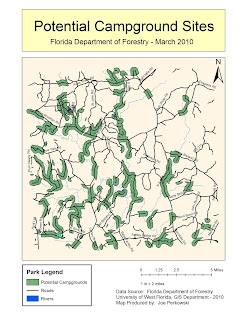GIS is an invaluable tool in the event of natural disasters. GIS can be used for a variety of disasters, both Natural and Man-made.
In relation to the Deepwater Horizon oil spill, GIS is being used for a variety of purposes by British Petroleum (BP),federal, state and local government agencies.
First Responders could be using GIS to map out the location and movement of the oil slick in relation to the coast line in order to predict where the oil slick makes landfall.
Enviromental agencies could be using GIS to map out protected species and conservation areas in respect to the actual oil slick location.
Federal agencies like FEMA could be using GIS to map out different command centers along the Gulf Coast of the United States that can be used for a variety of purposes such as handing out important information to news outlets and giving local volunteer groups directions to the nearest and most important cleanup sites.
National Marine Fisheries can use GIS to map the oil slick in order to ban commercial and recreational fishing in certain areas due the oil slick.
State and local commerce agencies can use GIS analyze where the oil slick is expected to make landfall in order to better predict the negative financial impact some areas will sustain.
GIS can offer professionals who are involved in the oil spill cleanup a large variety of uses to help them better visualize and analyze the oil spill, at which point the professional/agency can make better quality decisions in regard to solutions to the oil spill.






